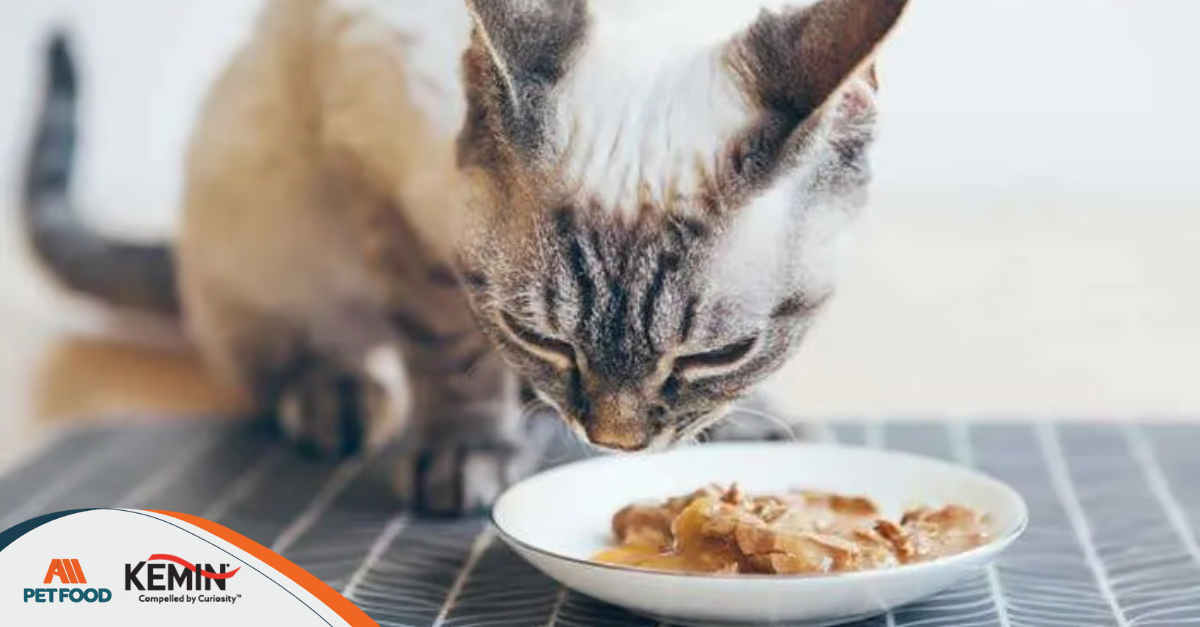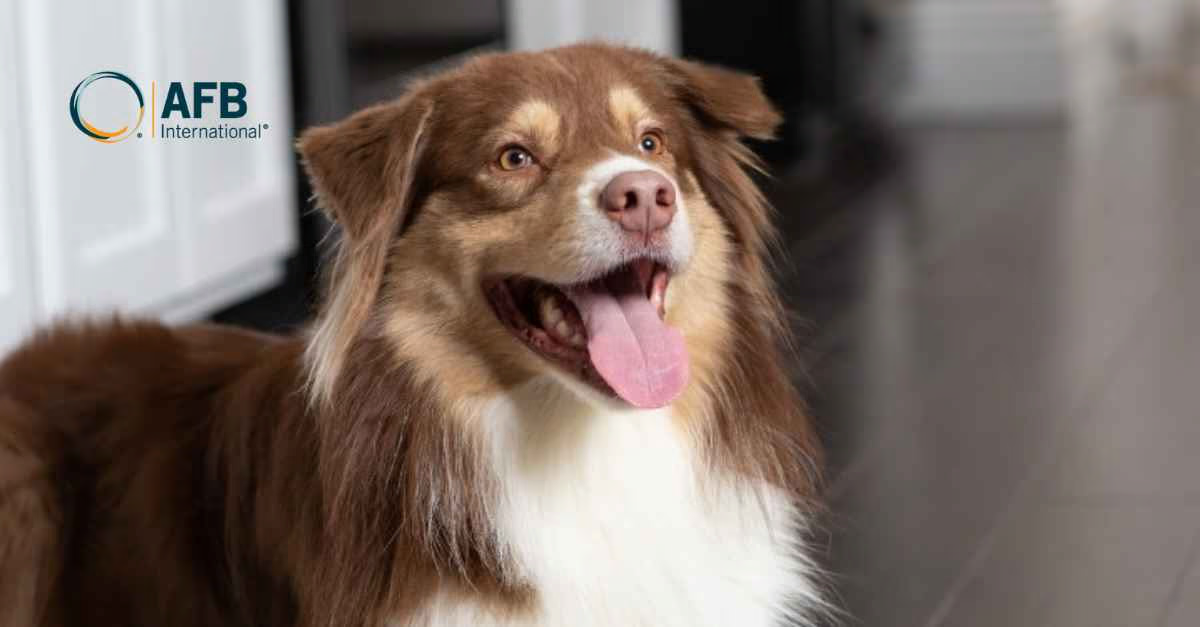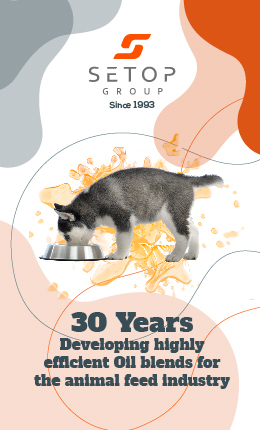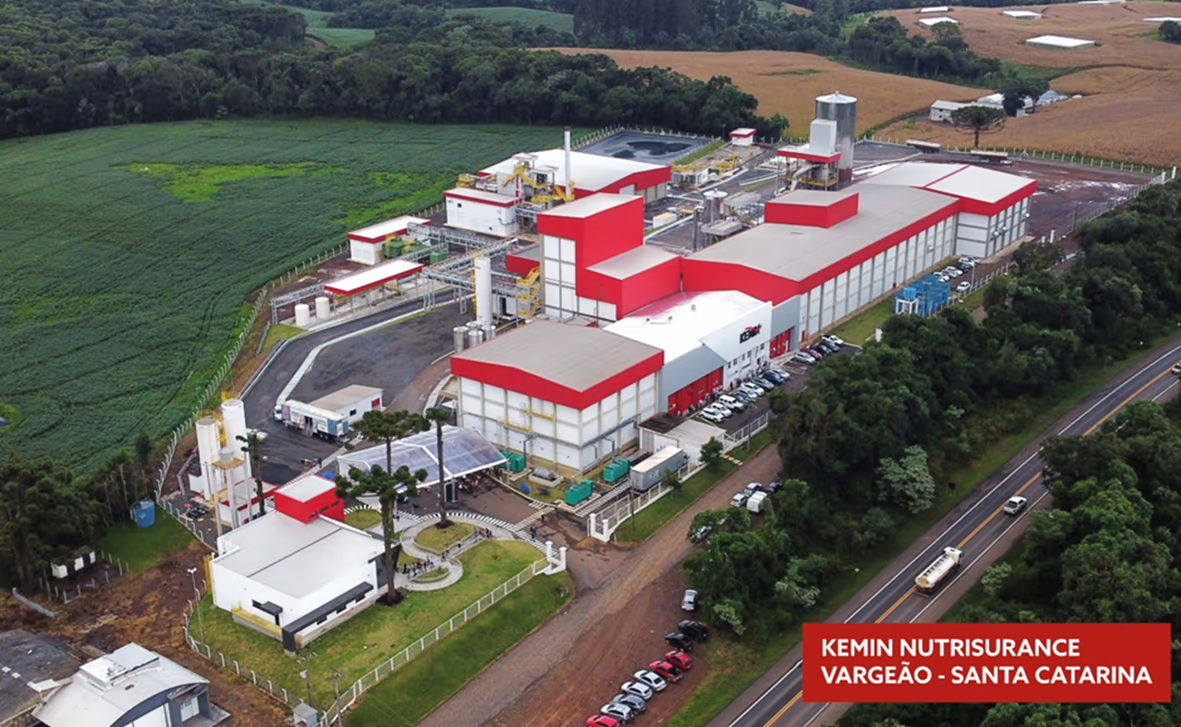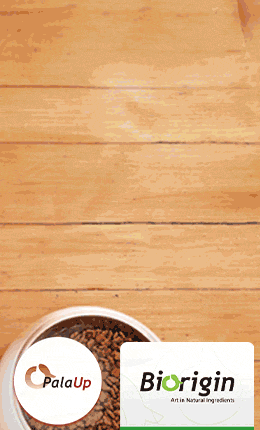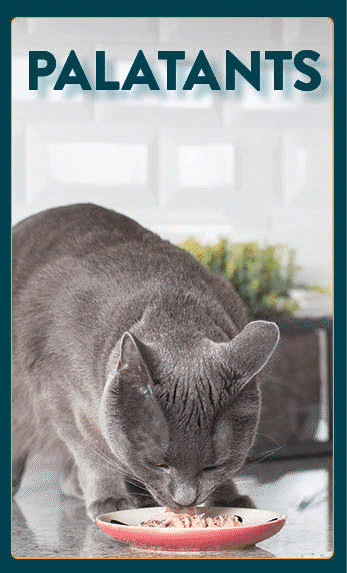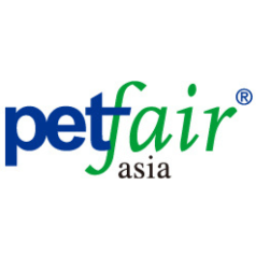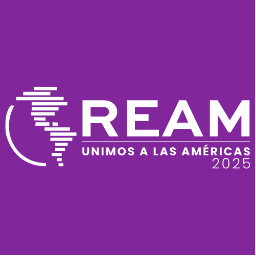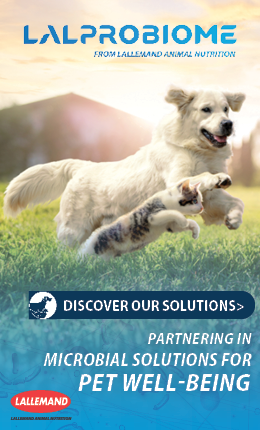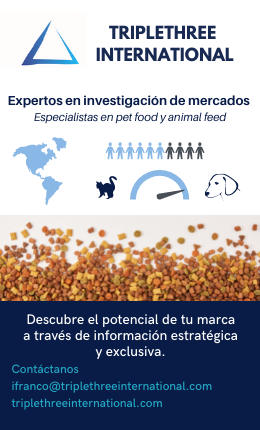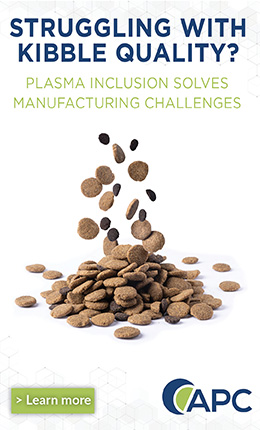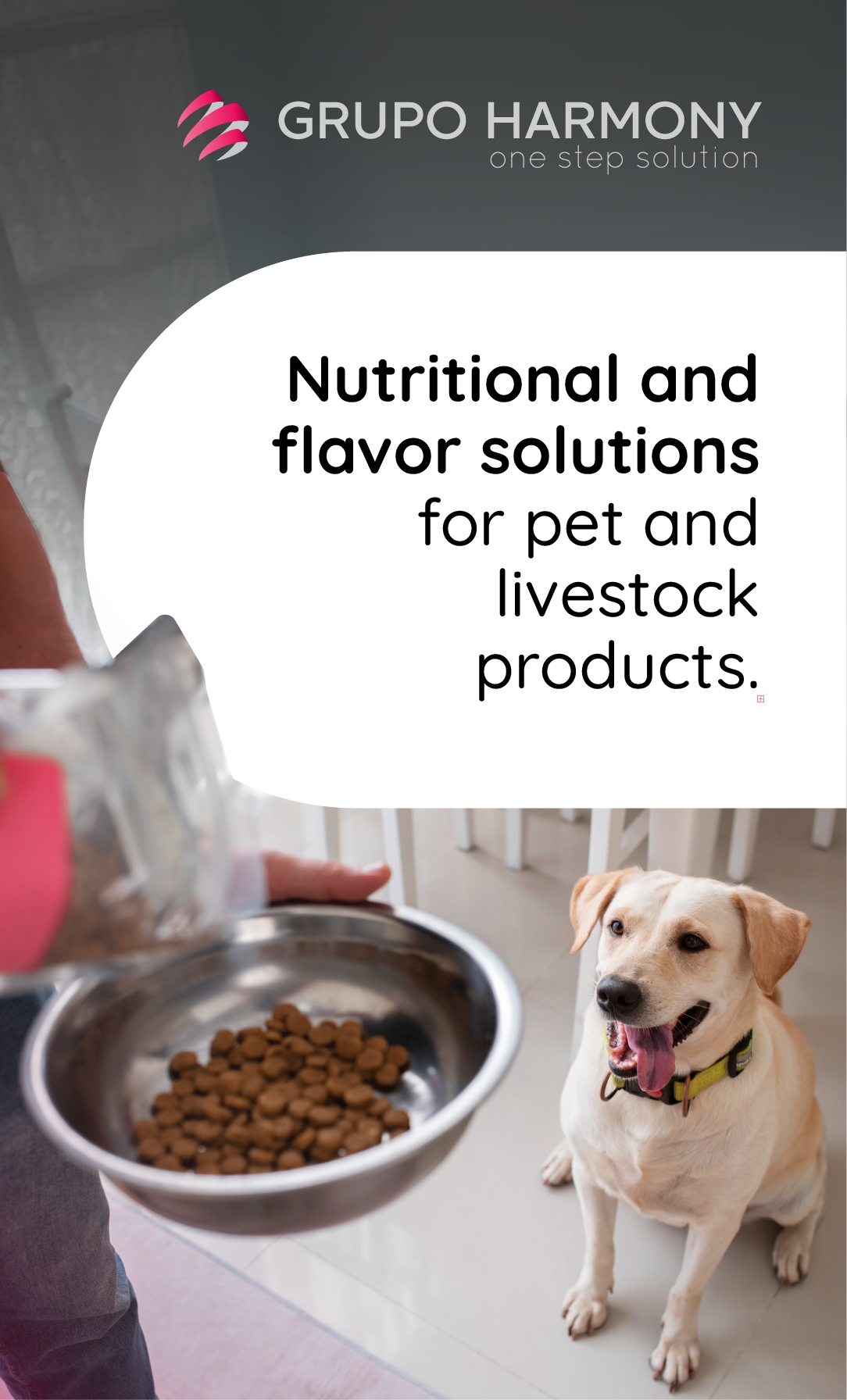Differences in Cats and Dogs
To begin the discussion on palatability, we must first understand our primary customers: cats and dogs. The variability between these companions —their behavior, eating habits, and nutritional needs— must be considered to satisfy them and encourage pet parents to repurchase their food. Understanding what makes cats and dogs eager to eat will help us optimize kibble manufacturing and achieve higher palatability.
One key difference between cats and dogs is their feeding behavior. Cats are carnivores, while dogs are omnivores, leading to different nutritional needs and formulas. For example, cats require higher protein levels and quality compared to dogs. FEDIAF recommends 18-25% protein for dogs and 25-33% for cats, affecting the starch content in their recipes and the nutritional values of the kibbles.1 These differences necessitate adjustments in production parameters to enhance palatability.
Cats' and dogs' sense of taste, while both based on a carnivorous pattern, vary significantly. Dogs enjoy sweet and certain acidic tastes, like carboxylic and phosphoric acids, whereas cats prefer bitter flavors and are not sensitive to sweetness.2
Dogs typically consume large meals quickly, possibly due to their pack heritage, and tend to grab kibbles with their teeth and grind them, preferring softer kibbles. Conversely, cats eat several small meals a day, mimicking their hunting habits, and use their tongues and molars to break food, preferring harder, drier kibbles.
Lastly, smell is a critical factor in palatability for both cats and dogs, with their sense of smell being far more sensitive than humans. Cats have twice as many smell-sensitive cells as humans, and dogs can have up to 300 million scent receptors, compared to around 5 million in humans.3
It's clear that we cannot produce cat food the same way we make dog food if we aim to satisfy both.
Importance of the Choice of Raw Material and Ingredient for Better Palatability
Let's delve into the pet food manufacturing process to identify ways to enhance palatability.
Before production, it's essential to carefully choose raw materials and other ingredients. Factors like high-quality proteins, lipid oxidation, freshness, and ingredient proportions significantly impact texture. Optimizing palatant choice and application is also crucial.
We tested replacing a certain percentage of non-hydrolyzed chicken meal and chicken liver with the same quantity of hydrolyzed chicken liver in a kibble recipe. The recipe remained identical except for the protein component. To assess pet food preferences, we conducted two-bowl tests, also known as versus tests. In these tests, two bowls were prepared, each containing a different type of pet food. We then measured the amount of food consumed from each bowl to determine the pet's preference. We observed significant improvements in palatability with a 5% or 10% inclusion of hydrolyzed chicken liver (Figure 1). Choosing the right protein is the first step to better palatability.
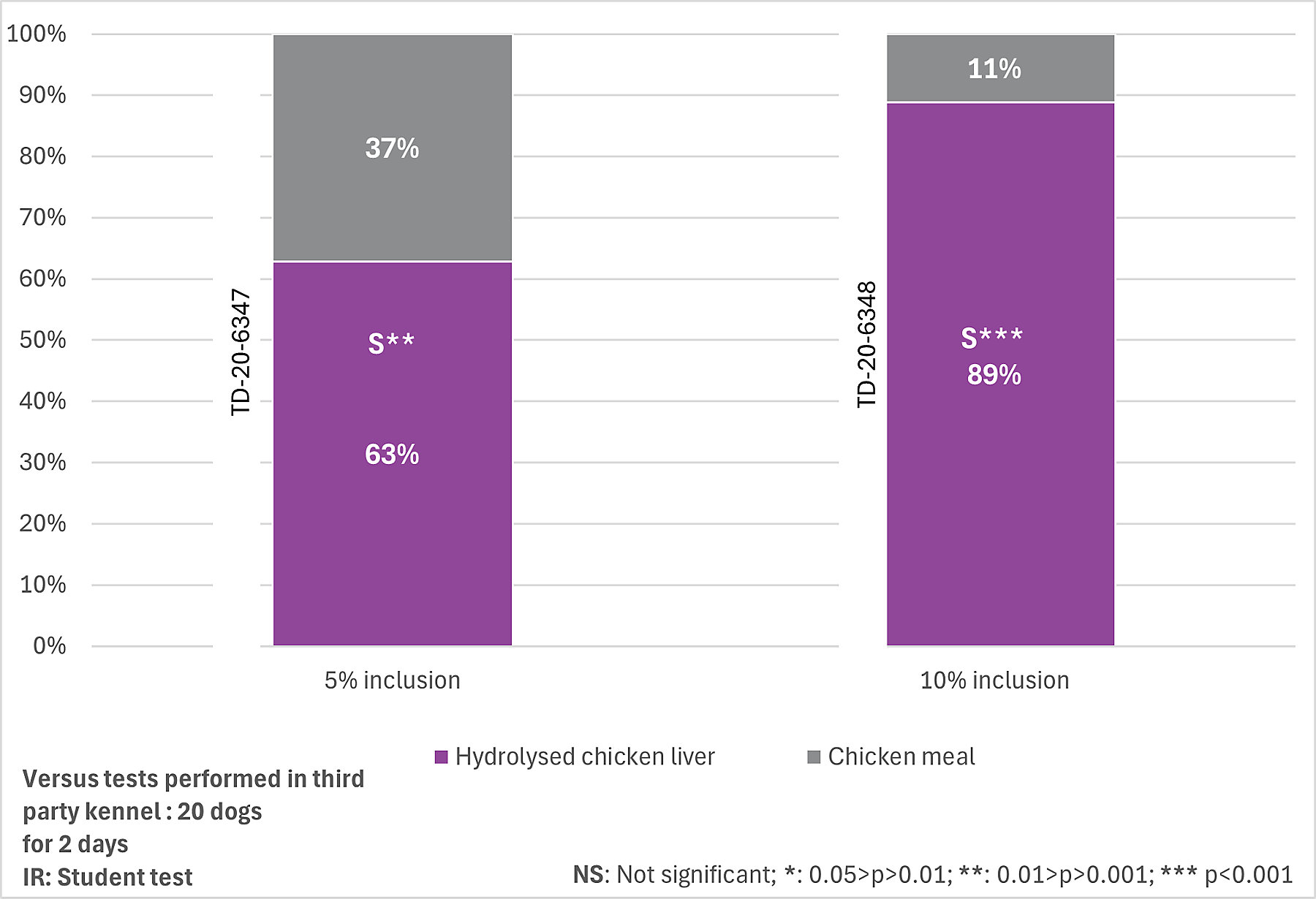
Figure 1: Palatability of diets Including chicken liver, chicken meal and hydrolyzed chicken liver4.
Oil and fat play a critical role as they are coated on the outside of the kibble first and are linked to freshness and oxidation. For both cats and dogs, palatability generally decreases when free fatty acid levels increase and when signs of oxidation appear. Controlling these factors is essential.
Several microingredients can affect palatability. Some may promote oxidation (e.g., certain minerals), while others can directly boost palatability, like specific sugars, salts, and amino acids.
Each of these components has a direct or indirect impact on the final product's palatability. Understanding and optimizing these elements can lead to better-tasting and more appealing pet food.
Pet Food Processing: From Grinding to Drying
The initial steps of grinding and mixing raw materials and other ingredients significantly affect the homogeneity and particle size of the kibble. In extreme cases, inadequate grinding can leave noticeable grain pieces post-extrusion. Even mild cases of particle size variations within a kibble mixture can alter texture and reduce homogeneity.
After mixing, the ingredients typically move to the preconditioner, where the type and quantity of starch used play a crucial role. During this process, starch gelatinization occurs as starch and water are heated, causing the starch granules to swell and irreversibly absorb water. This gelatinization begins in the preconditioner and continues in the conditioner.
The level of gelatinization is vital for kibble expansion and cohesion. Insufficient starch causes kibbles to fall apart if attempting to reduce density, while higher starch levels increase density (Figure 2). This step is key for both kibble production and palatability, especially for cats but also for dogs. The hardness of dry cat food granules significantly affects their preference, with harder products being more favored by cats according to a study by V. Eles, I. Hullar, and R. Romvari.5
For cat kibble, balancing the necessary levels of protein and fat is challenging, as it limits room for starch needed for kibble expansion and cohesion. Meeting the nutritional needs of cats and dogs while ensuring correct kibble expansion and palatability is essential.
Gelatinization continues during extrusion, playing a determining role. The homogeneity of the dry mix can vary depending on the equipment used, such as a twin-screw extruder, which helps homogenize and increase palatability.
Additionally, kibble shape and size are important considerations. Dogs typically prefer larger kibbles, while cats might struggle with a kibble that is too big for their mouths. Larger kibbles also have less surface area for palatants (for quantity equivalent). Complex shapes may decrease palatability due to the difficulty for the pets to prehend the kibbles.
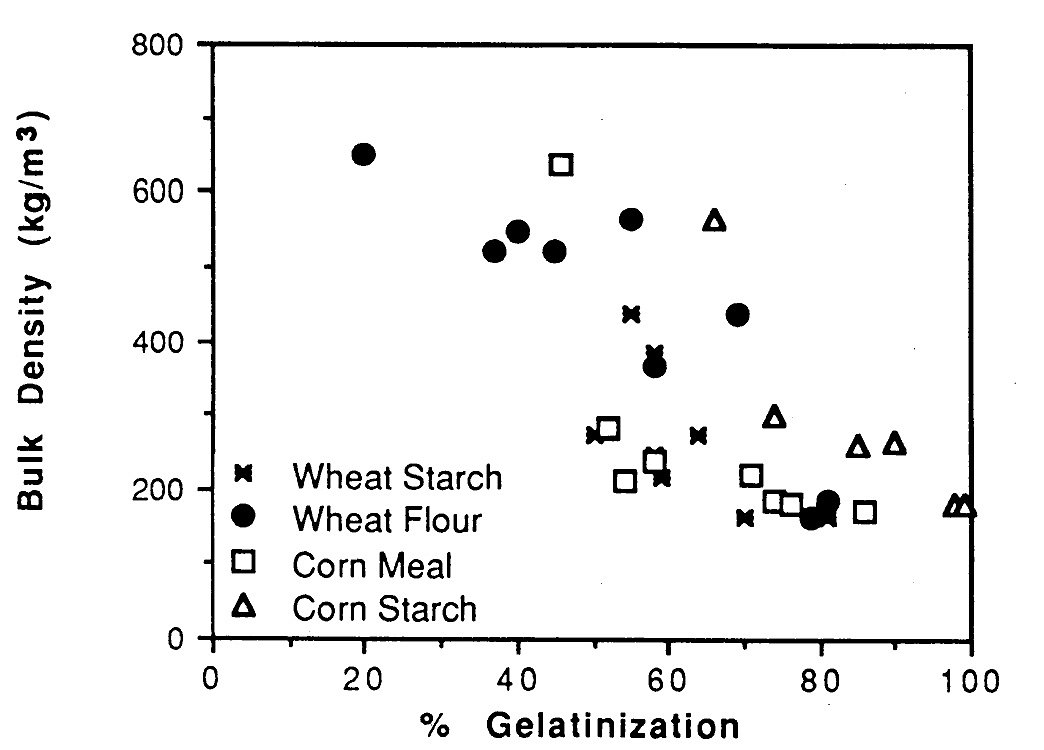
Figure 2: Impact of gelatinization on the bulk density of the kibbles6.
Post-extrusion, drying is a critical step that must be carefully controlled. Excessive moisture variability in a batch can affect palatability from one bag to another. The market average for optimal dog food palatability is around 8% moisture, balancing food safety and mold prevention. For cat food, the target is closer to 6% moisture, the objective being to have the lowest moisture but without breakable kibbles. Consistent moisture levels within batches allow for better control over palatability. Rapid or excessive drying can negatively affect kibble texture and palatability (drier outside than inside).
Typically, a shifting step after drying and before coating removes the dust and powder (fines) produced after extrusion. These fines negatively impact palatability by being unappealing and causing palatants to be lost, reducing the amount coated on the kibbles.
Pet Food Processing: Coating Optimization
One of the most critical steps in achieving optimal palatability is the coating of fat and palatants. This process can be optimized in several ways.
It's important to remember that the ingredients used for coating vary depending on whether the food is for cats or dogs. Fat, usually applied in amounts ranging from 1% to 15%, serves nutritional purposes and protects the kibbles, often containing antioxidants. Fat helps palatants adhere to the kibble and provides an initial level of palatability. However, fat alone isn't sufficient to significantly boost palatability. In tests without palatants, we found that consumption rates were below average, indicating that neither cats nor dogs were satisfied.
To enhance palatability, we add liquid palatants (1% to 4%) or powder palatants (0.5% to 3%), or both. Liquid palatants enhance aromas and can act as binding agents for the powder. These are mainly used for dog food, given the higher moisture targets and preference for smoother kibbles. As scent is a crucial factor for dogs, aroma plays a significant role. Powder palatants add flavor, help to control the moisture and are typically used for cat food, which targets low moisture and high protein content. Cats have three types of chemoresponsive tongue receptor units, each responding to different compounds that can be found in quantity in powder palatant (amino acid, inorganic salts, nucleotides...)7.
It's generally recommended, though not mandatory, to apply fat first, followed by liquid palatants and then powder palatants to optimize the effectiveness of each component. Adequate amounts of fat and liquid palatants should be used to ensure the powder adheres well to the kibble.
Optimizing the spraying system and mixing processes is vital for effectively applying these ingredients. Here are key factors to consider:
1. Nozzle selection and placement (Figure 3):
The diameter and pressure of the nozzles affect the homogeneity and efficiency of the coating. Larger diameters may cause excess coverage, while smaller ones might not cover all kibbles.
Pressure impacts droplet size. Too low-pressure results in concentrated sprays, while too high pressure creates a cloud, leading to palatant loss.
Nozzles should be spaced adequately to avoid overlap and ensure even coverage. They should also be positioned close enough to reach the kibbles without significant loss of liquids.
2. Mixing process (Figure 4):
In a batch coater with two shafts, mixing from the outside to the inside creates a hill, enhancing palatant coating. Mixing from the inside to the outside creates a hole, leading to clustering and poor homogeneity.
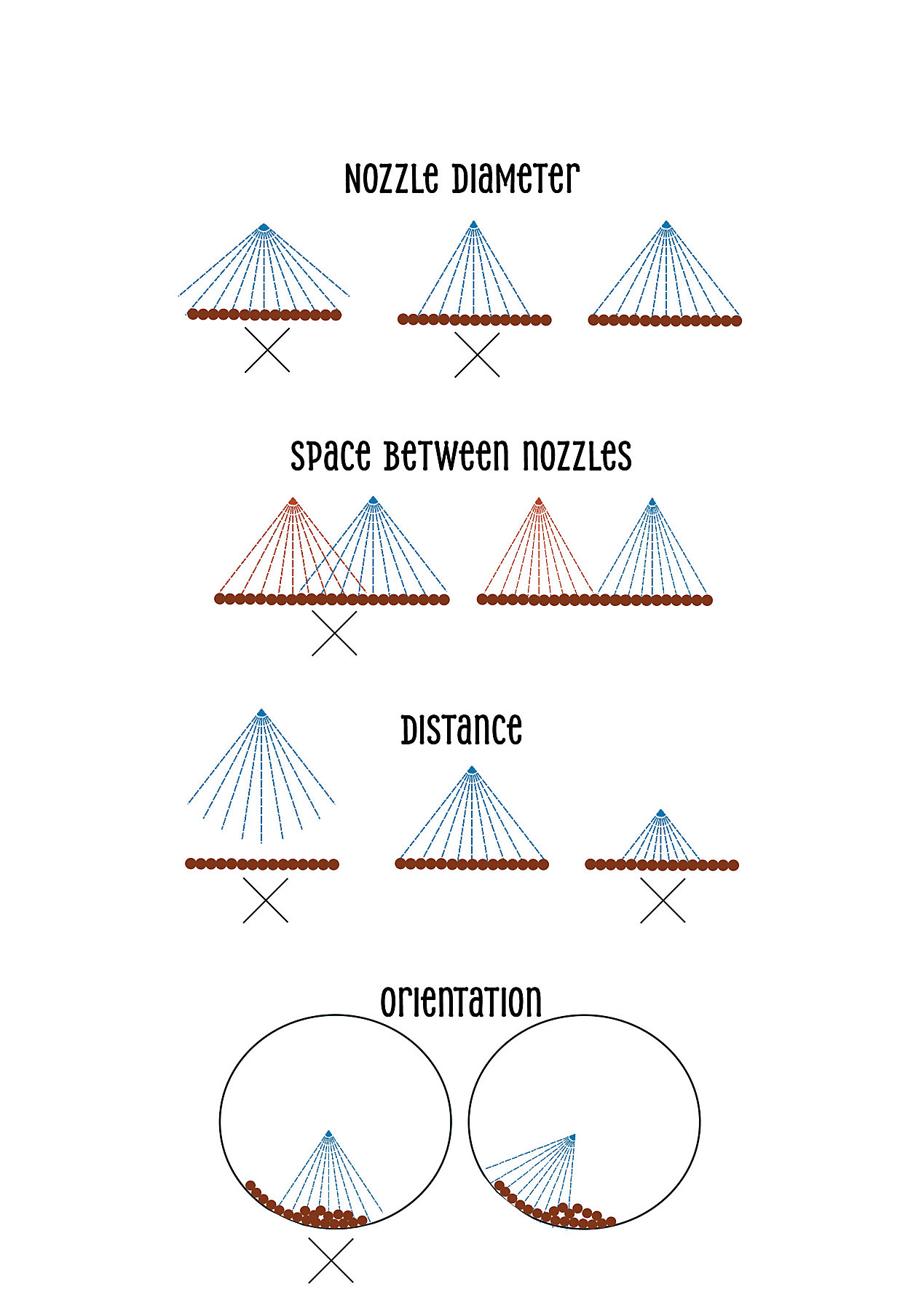
Figure 3: Optimizing coating homogeneity
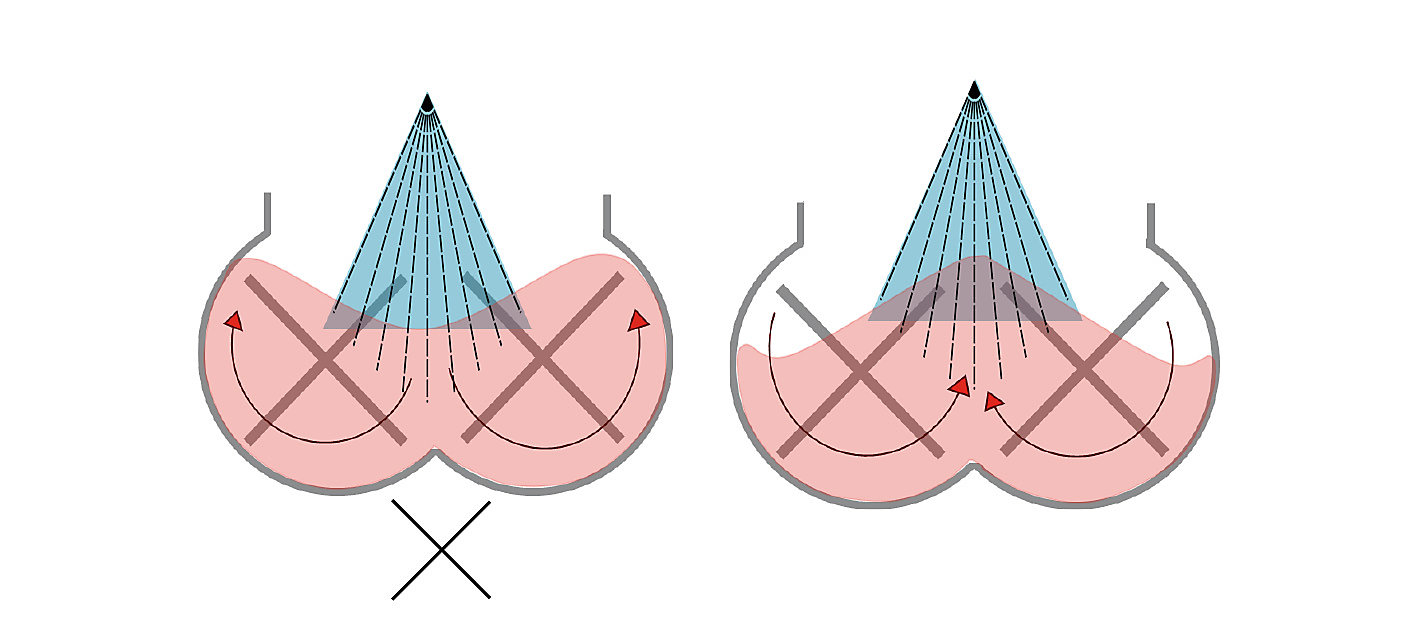
Figure 4: Optimizing mixing
By carefully selecting ingredients and optimizing application techniques, we can significantly improve the palatability of pet food, ensuring satisfaction for both pets and their owners.
We cannot finish discussing the impact of coating on palatability without addressing the main differences between batch and continuous coaters.
A batch coater generally provides more homogeneity and allows for parameter adjustments from one batch to another. Since it is enclosed, it enables high-rate fat coating (using vacuum coaters) and simplifies the cleaning process. It also helps prevent dustiness during powder coating. However, batch coating is typically slower and more expensive. The main advantage of a continuous coater is its faster process, making it more cost-effective.
In general, batch coating is more recommended when higher palatability is required, especially when producing super premium products.
Conclusion
Understanding the unique needs and behaviors of cats and dogs is fundamental to optimizing the palatability of pet food. Given their distinct feeding habits, nutritional requirements, and sensory preferences, it is clear that a one-size-fits-all approach does not work. The manufacturing process, from grinding to drying, plays a crucial role in determining the final product's texture and palatability. Adequate starch gelatinization, precise mixing, and controlled extrusion and drying processes are essential to achieve the desired kibble consistency and taste. Each step must be fine-tuned to maintain the integrity and appeal of the kibble, catering to the specific preferences of cats and dogs. Coating, one of the most critical steps for enhancing palatability, requires careful consideration of the ingredients used and the application techniques. By optimizing the use of fats and palatants and ensuring efficient spraying and mixing, we can create a more appealing product.
In conclusion, improving the palatability of pet food involves a multifaceted approach that encompasses ingredient selection, precise manufacturing processes, and effective coating techniques. By addressing these factors, we can ensure that both cats and dogs receive food that satisfies their taste preferences.
References
1 https://europeanpetfood.org/wp-content/uploads/2024/09/FEDIAF-Nutritional-Guidelines_2024.pdf
2 John W S Bradshaw, The Evolutionary Basis for the Feeding Behavior of Domestic Dogs (Canis familiaris) and Cats (Felis catus),The Journal of Nutrition
3 Padodara, R. J. and Ninan Jacob, Olfactory Sense in Different Animals
4 Kemin researches
5 V. Éles, I. Hullár, R. Romvári, Texture of dry cat foods and its relation to preference
6 https://www.cerealsgrains.org/publications/cc/backissues/1992/Documents/69_401.pdf
7 Watson, P.E.; Thomas, D.G.; Bermingham, E.N.; Schreurs, N.M.; Parker, M.E. Drivers of Palatability for Cats and Dogs—What It Means for Pet Food Development. Animals 2023, 13, 1134.
By Maïlys Le Thiec, Technical Service Manager | Kemin Nutrisurance EMEA
Source: Kemin Nutrisurance
You could be interested: Solutions for drugs and dietary supplements
About company
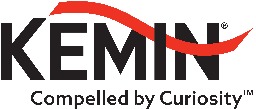
About company
Kemin is more than a supplier of ingredients; we are a global company that transforms the quality of life.
Kemin is the science inside the countless products you interact with every day. We create solutions that help strengthen your health and well-being. We provide nutrition and immune support for your pets and production animals. We protect the planet's natural resources and are dedicated to reducing our environmental impact, and we believe in protecting the global food supply chain for future generations.
At Kemin, we always look to tomorrow. Human imagination, scientific innovation and constant curiosity help shape our company and how we serve our customers now and in the future.
We see beyond what is, in order to see what could be.
The world has been transformed since R.W. and Mary Nelson founded Kemin in 1961, but our dedication and discipline in scientific research remain unwavering, as does our energy and enthusiasm to discover new ways to improve life. Every day, we ask ourselves how we can channel our experience and expertise into new opportunities to improve the quality of life around the world.
Noticias de la empresa
21/05/2025










